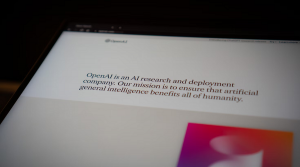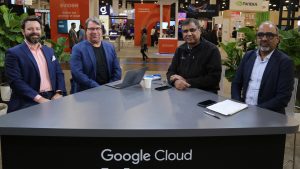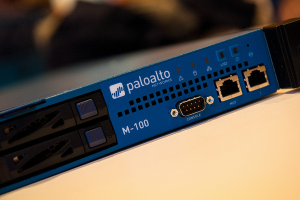Giving Android a Chance
A little less than a month ago, I wrote some effusive praise for the iPhone 4S on this blog and chronicled my buying experience. The 4S is a very impressive device in many respects, but my experience with it on a day-to-day basis has convinced me that it’s not for me so I returned it yesterday and got an Android device in its place.![]()
The 4S gives a nice demo, is very easy to use, hosts a wide variety of very good applications, but is too limited for my purposes. It’s not just a matter of its lack of support for LTE and Near-Field Communication, two features that aren’t important today but which certainly will be before the end of a two-year contract, it’s also things like the limited battery life, the hiding of too much essential information about the phone’s operation, the bizarre sync behavior of the iTunes desktop app, and the botched software update Apple issued last week that did more harm than good. The update has garnered mixed reviews, but in my case it radically reduced Wi-Fi range, degraded Bluetooth quality, and essentially destroyed GPS accuracy. I mainly use my smartphones in my car, for GPS navigation, music, and phone calls, so these are very important features for me. The last straw was the GPS navigating me to a residential street a block off the main drag in Alameda Sunday night when I was looking for a restaurant. 200 foot accuracy is simply not good enough.
Apple didn’t just botch the update – anybody can do that and this one was done in a hurry – they also refused to allow people who didn’t like it to roll back to the much more reliable (if battery-draining) original iOS 5.0.0 software that came with the phone on day one. In a walled garden system, the user is at the mercy of the device manufacturer both for good and for ill, and in this case the 5.01. update was mostly for ill.
I found that Siri is a promising feature that doesn’t deliver. It might be fine for managing appointments – I never asked – but it doesn’t handle the tasks I asked it perform at all well. Asking for a Thai restaurant in Burlingame, CA took me to a highly-rated (by Yelp) take-out joint that doesn’t fit my concept of a restaurant at all. Siri won’t let you see the Yelp reviews, so you don’t know what you’re getting until you’re there.
Asking it for a Monument car parts place (where they apparently sell Redline motor oil) while three blocks away from one got me the suggestion that I should drive 30 miles to about the tenth closest one, and no amount of coaxing would get me the address of the one I wanted. This information is in the phone book, not hard to come by. Siri doesn’t integrate with third party apps, so instead of sending an address to my navigation program I got a crudely-drawn Google Maps picture instead of turn-by-turn navigation. When I asked Siri to play some Clapton for me (on a phone with a Clapton play list) it gave me one random song and stopped.
The iTunes sync behavior across multipe machines is simply bizarre. I set up my iPhone and my iPad on my desktop computer, but on the road I need to connect them to a laptop that I occasionally use. When I did this with my iPad, my apps were temporarily erased, but they were restored on my next connection. With the iPhone they were simply erased and I had to download them again from the store in order to restore them, which came at the expense of all their settings. All of that just to use the iPhone as a modem (and yes, I know I could have just turned off iTunes auto loading and auto sync, but by the time I did that the damage was done.)
I have iPhone integration in my car so I really wanted this thing to work, but it was just one dead-end after another. It’s too early to say whether I’ll like my Android phone any better – it’s a Samsung Galaxy S II Skyrocket – but it does have some immediate and obvious advantages.
For one thing, the screen is larger, which means the virtual keys are larger. This is a plus in two ways: The iPhone’s keyboard is sized for people with very small fingers and thumbs, and has a very annoying layout compared to the iPad. Most of the time there’s no “dismiss” button to make the keyboard go away, and there aren’t any punctuation marks on the main keyboard. It’s quite commonplace to need an apostrophe or an “at” sign, and these are shifted on the iPhone. On the other hand, Apple’s predictive text is much better than Android’s.
The larger screen means that web pages and emails are much more accessible in portrait mode, which is a big plus for older people. The voice quality of the Samsung phone is much better than Apple’s as well. The iPhone’s weak voice has always been my major problem, and there doesn’t seem to have been much progress made in that direction since the original iPhone was released. It sounds alright to the iPhone user, but not so good to the person on the other end.
It’s also immediately clear that the Android apps allow the user to see more of what’s happening with the internals of the phone than Apple allows, and there is a potential for file sharing with a Windows network through various forms of Samba, another big plus. The Android is much more annoying to set up and configure, but that’s par for the course with Linux and not at all new to me.
The iPhone is a perfectly fine platform for its intended audience of “the rest of you,” but I’m a geek and I don’t want my hand held while I go around the world doing my business. I certainly hope Apple can get its act together because we probably wouldn’t have Android phones and tablets if it weren’t for iOS, but they’re going through a rough patch right now and I can’t wait for them to correct their problems. An iPhone 5 with decent voice quality, a bigger screen, LTE, dual-band Wi-Fi and NFC would be a good start, and it can’t be very hard; Samsung did it after all.
My initial Android experience ended the same way as my 4S experience: I had a G1 on T-Mobile a few years ago, but I took it back after the battery life and networking experience let me down. I hope this one is better, as I’d hate to have to take it back as well.
[Cross-posted at High Tech Forum]
A message from John Furrier, co-founder of SiliconANGLE:
Your vote of support is important to us and it helps us keep the content FREE.
One click below supports our mission to provide free, deep, and relevant content.
Join our community on YouTube
Join the community that includes more than 15,000 #CubeAlumni experts, including Amazon.com CEO Andy Jassy, Dell Technologies founder and CEO Michael Dell, Intel CEO Pat Gelsinger, and many more luminaries and experts.
THANK YOU













